Write Us
We are just a call away
[ LET’S TALK AI ]
X
Discover AI-
Powered Solutions
Get ready to explore cutting-edge AI technologies that can transform your workflow!

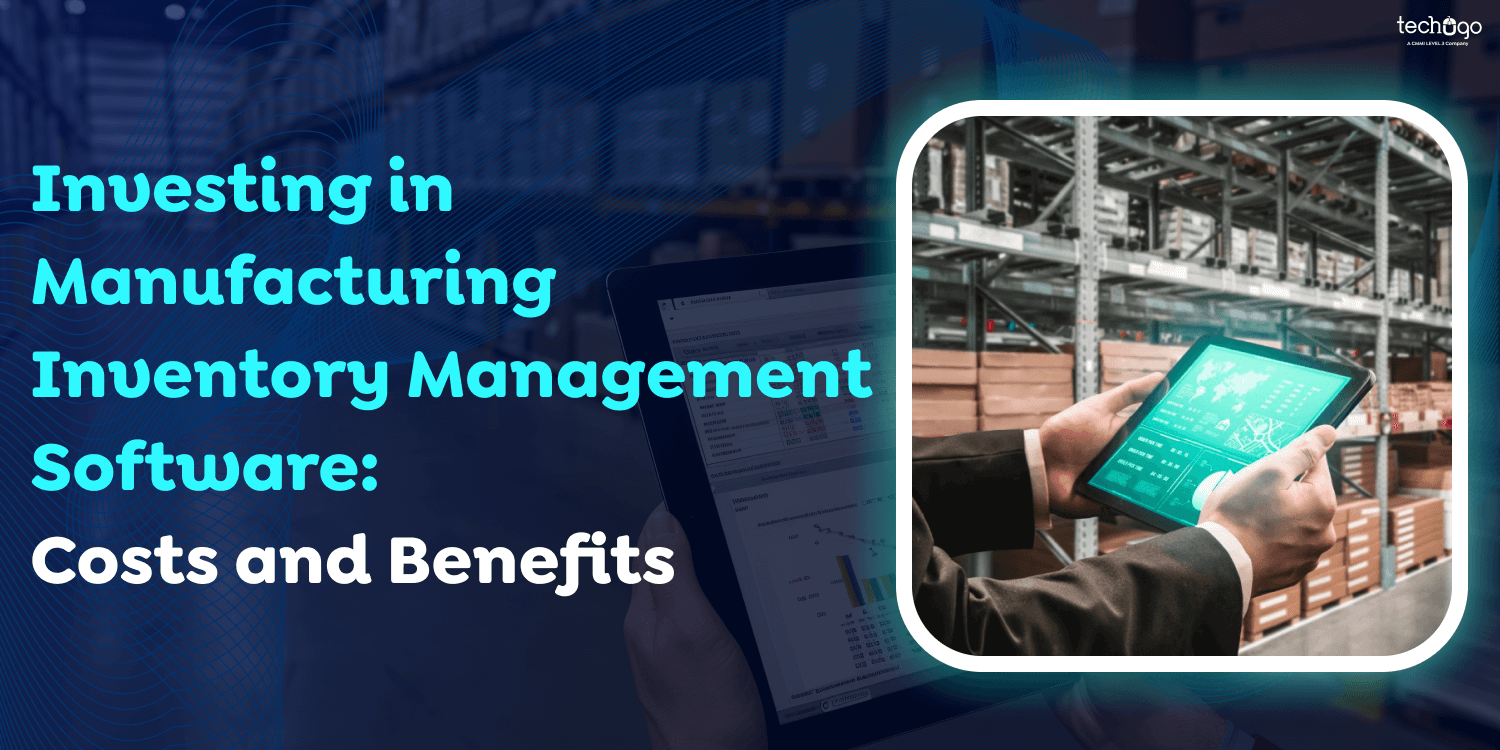
You will all agree that managing inventory is a significant challenge in the constantly changing world of manufacturing. The old-fashioned inventory tracking method can result in out-of-stock situations, production delays, and increased costs. These problems cause delays, frustrate customers, and can affect profits.
Investment in manufacturing inventory management software can be an integral step towards success, like upgrading from printed maps to GPS for tracking your inventory. It has real-time tracking, automated order reordering, and intelligent information insights. This software helps make your business more efficient, saves money, and allows you to quickly deliver orders to your customers.
A significant amount of money is required to create and integrate this software. The initial expenditures are crucial to guarantee the successful installation and personalization of functions tailored to companies. Although developing and integrating the software may be expensive initially, the long-term rewards far surpass the initial cost. Consider it an investment app for the growth of your company.
In this blog, we will examine the costs involved in building manufacturing inventory management software and how it can contribute to market growth.
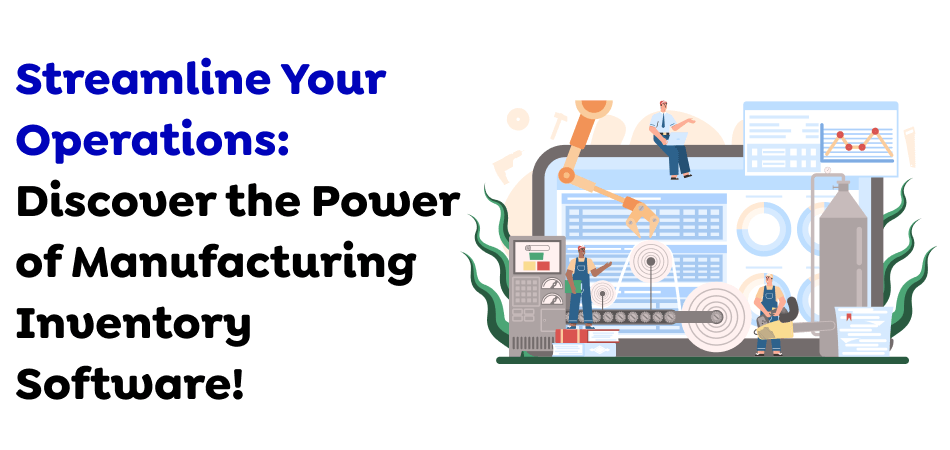
The core of manufacturing inventory software functions as the digital command center for inventory control. It’s an extensive system created to monitor, track, and enhance inventory levels over all manufacturing stages. From the time raw materials arrive at your plant through the delivery of the finished product, this program meticulously documents every step to ensure that you possess the proper materials in the appropriate amounts at the correct moment.
Additionally, the software has been designed to be fully functional and custom app developed, providing an opportunity for users with the most current information regarding the stock’s location as well as the rate that can be quickly sold as well and the length of time it is likely to be kept for. This data allows companies to avoid risky situations like storing excess or lacking stock. The risks could affect improving the efficiency and capacity of the business online.
The manufacturing landscape is characterized by increasing complexity and fierce concurrence. Supply chains are getting more global, and consumer expectations are growing as the need to cut costs and increase efficiency is never-ending. In today’s competitive environment, conventional methods for managing inventory that rely on spreadsheets or manual tracking do not meet the demands of today’s marketing automation. The result is a rise in the demand for manufacturing inventory software.
Also Read : A Comprehensive Guide On Transportation Management System Software!
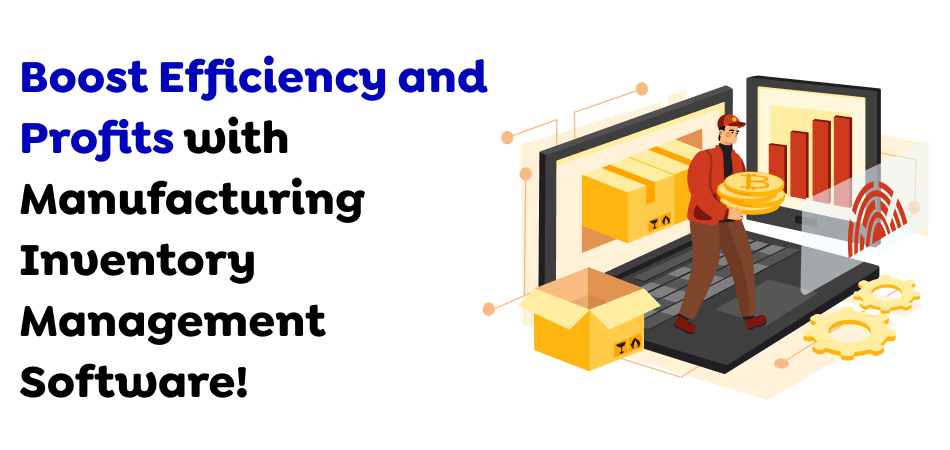
When you run a manufacturing company, one of the most challenging tasks is managing stock levels. If the number of orders increases and you expand into market opportunities, controlling your inventory levels by hand can soon become impossible.
It is good to know that software development for inventory management is designed to ensure that companies accurately understand every item stored in their stores. It provides companies with the highest levels of control and management of their stock, so at any moment, anywhere, users authorized to access the system have a complete image of their stock.
Inventory management programs allow you to easily maintain a complete record of all products’ availability. You can verify the product’s status without rushing to warehouses, saving lots of time and energy.
Keep complete track of your inventory in all aspects so that you can keep your clients and reduce the chance of regular human errors in detailing, such as the incorrect check of goods. In addition, by using software to manage the inventory, you can quickly and easily keep track of delivery dates. Customers don’t have to wait long for their packages to arrive.
If your items are stored in different areas, it can be challenging to organize, monitor, and deliver the right products to clients. An all-encompassing organized distribution center will help you track different items’ access and inform clients of their delivery status.
An inventory management software developed by a mobile app development company in Dubai provides users access to comprehensive information about the materials at any time. It can be helpful when you’re trying to negotiate with potential suppliers. In particular, you’ll be able to determine which suppliers are most advantageous to your company.
If the absence of stock is a nightmare for your company, Overloading can be even more detrimental. When you use a quality inventory management system, you can track the true stock supply and make a request at any time. It will eliminate the loss of products, which results in huge sums of money-related misfortunes.
You will surely make your clients happy with fast and precise responses, timely delivery, and personalized service. Customers will be able to track the status of their delivery and not risk receiving delayed notification of the product’s inability.
Also Read : What is the cost to build a mobile app in the UAE?
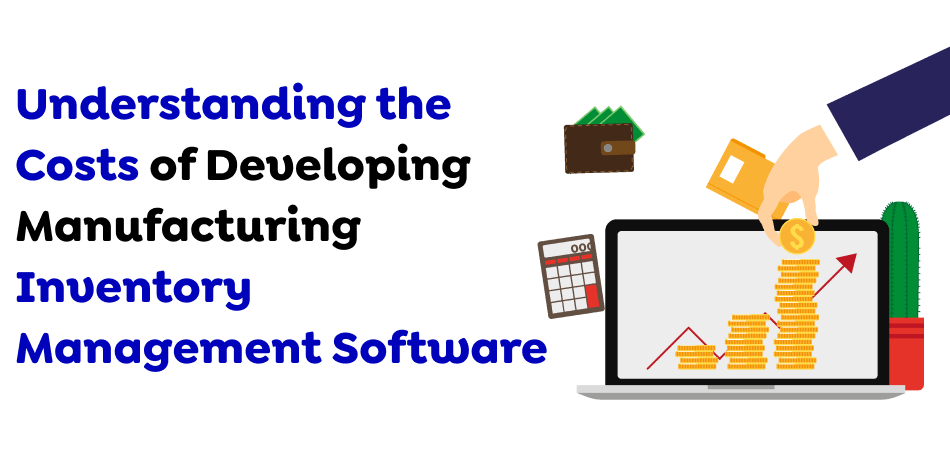
To maximize efficiency, each business, no matter how big, must have an inventory management program. You should get the top customizable software for managing inventory to keep track of the inventory and control the stock levels of your manufacturing facility and warehouse space. Perhaps you’re wondering about the cost of developing a system from scratch if you are looking for custom software to manage inventory for your organization.
The cost to develop a mobile app and custom software for managing inventory is based on various factors. It includes the software platform that will be utilized, the task’s complexity level, the elements to be added and modified to API integrations, and much more.
Although pre-designed inventory management systems could save you an enormous sum of money, they can also have drawbacks. Customization is an ideal option if you require specific solutions to manage your inventory. Building an MVP in the beginning is an effective strategy, but it is possible to add additional features to the software in the future. Based on your specific requirements, inventory management software will typically cost between $20,000 and $250,000 and more.
Also Read : Driving Progress: The Rise of Software Development in the Middle East
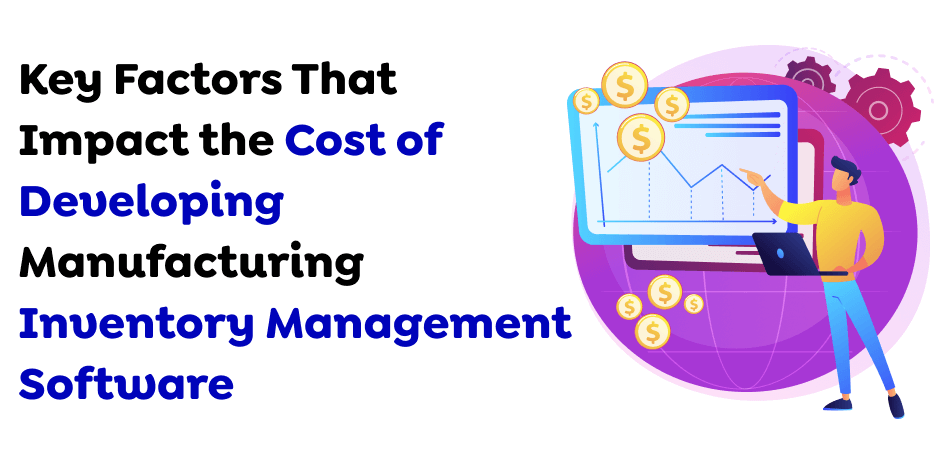
Knowing the costs of the software for managing inventory in manufacturing requires looking at various factors that influence the pricing overall. These factors determine the cost of building the most efficient and effective system for inventory control and optimization within manufacturing settings. We’ll briefly review these.
The requirement for flexible solutions that can grow with the app development company needs dramatically affects the price of developing inventory software designed for industrial use. Systems that can scale require a robust design and architecture, which increases the cost initially. However, it will be more efficient and flexible over the long term.
Flexible design, cloud computing integration, and database scalability each influence production inventory software development costs and are essential to meet the projected expansion. The planning of scalability affects the development expenses of manufacturing inventory systems by predicting scenarios for peak demand. It ensures that software can handle increasing transactions without degrading efficiency.
The complexity and elements required will significantly influence the cost of developing a manufacturing inventory system. Modern features like automatic replenishment, real time updates tracking, and extensive data analytics increase the amount and cost of development. The ability to customize the inventory management software to meet specific business demands also increases the cost.
Additionally, adding features such as inventory management across multiple locations, IoT device integration, and predictive analytics could significantly raise the total development costs. Ensuring that the software is scalable and adaptable enough to allow for any future business expansion could make it more complex, affecting the general manufacturing inventory software development cost.
Increased manufacturing inventory and costs for software development are typically due to having to meet an accelerated development deadline that requires additional capabilities or quicker solutions. Effective cost management relies upon balancing the total cost with the expectations of the schedule.
Using rapid development techniques and precise project deadlines streamlines timelines and reduces risk, decreasing the overall cost of development. Communicating and evaluating the project’s progress regularly is important to ensure that your project goals are consistent with the financial information during the manufacturing inventory software development process.
In the end, creating a user-friendly and a user-friendly interface is important; however, it could also add to the costs of developing manufacturing inventory management software. Enhancing the usability of the interface and reducing training times will benefit businesses in the long term. Methods of design that iterate and emphasize research with users ensure that the application lives according to its users’ expectations, improving customer satisfaction and the adoption rate.
The technology that underlies your software greatly impacts your decision-making process regarding cost. The choices of programming languages, frameworks, databases, and cloud infrastructure affect development times, complexity, and resource requirements. Furthermore, the development effort will increase and impact the total cost when working on several platforms (web, mobile, and desktop).
Your developers and their geographical place of work also play a role. Expert mobile app development company in UAE are paid higher, but their expertise translates into quicker development times and higher-quality code. Location plays a part in this regard, as those working in specific regions with various pricing structures are.
Integrating the latest inventory management software is essential if your company’s manufacturing operation has various systems in place, such as ERP, CRM, and accounting programs. The difficulty of the integrations, data migration, and the need to ensure the seamless flow of data can affect the timeframe for development and cost.
Rigid testing is essential to ensure your application functions smoothly and offers a flawless user experience. Allocating resources to comprehensive testing, bug-fixing, and quality control is crucial, as it affects the project’s timeframe and cost.
Also Read : Mastering Mobile App Quality Assurance: Crafting Flawless Experiences
The choice of deploying on-premise or cloud-based options affects costs. On-premise options require the investment of equipment, servers, and even maintenance. Cloud-based solutions typically require subscription charges, but they ease the strain of infrastructure management.
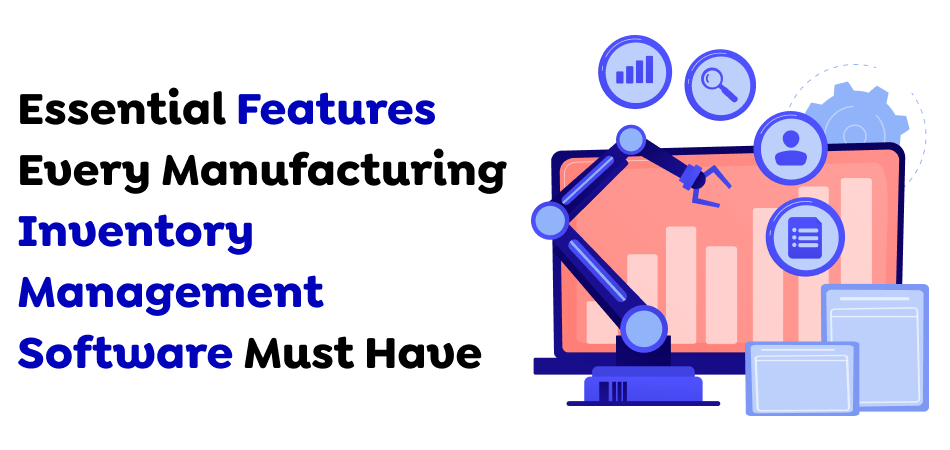
Custom manufacturing inventory management software includes various functions created to help streamline inventory tracking, optimize the fulfillment process, and improve warehouse management. It’s also crucial to consider that incorporating the latest features may affect the total production inventory software development cost. We will take a look at some of the top features.
Produce comprehensive analytics reports about inventory level, stock turnover, and performance indicators. It assists in making informed choices and constantly enhances inventory management practices.
The expert mobile app development company in Saudi Arabia integrated this feature to help you simplify your inventory by providing vital information like cost, availability, and other details. It allows you to choose everything based on its specific characteristics and efficiently controls the items.
One of the most important features of an inventory management system is the conversion of material amounts to larger or smaller units. This permits easier planning of material needs, bulk stock management, billing for material invoices, and a lean manufacturing company.
This tool lets you control your suppliers, buy order sprints, and monitor lead times. In the long term, this feature is crucial for smoothing your purchase user experience and eliminating out-of-stock problems.
Automated ordering helps smooth the order process to avoid errors and other related issues by establishing stock limits and allowing for autonomous order processing after a fixed amount of inventory has been exhausted.
This makes determining and tracking products’ lifecycles much easier by focusing on individual products (instead of fumbling with SKUs). It effectively tracks warranties and identifies defective products.
This will allow you to improve the efficiency of your supply chain management and help you better manage what is available in the stockroom. This feature helps by facilitating categorization and live report writing, data auditing serial numbers or SKU tracking, and filtering, searching, and displaying items using the same web application.
This is when intelligent Reordering is a must. It helps you forecast the demand for certain items to ensure you have the most profitable products available and eliminate the most infrequently used items to prevent stocking up.
It is yet another instance of automation to ensure complete product identification with no barcode errors and the management and creation of digital inventory (which helps to speed things up and solves many of the problems).
Inventory alerts can be useful for delineating crucial aspects that could be better optimized and controlled. It includes delays in supply chain delivery, waste-related indications or financial signals, and numerous other types of push notifications.
A business may have several storage facilities. An inventory management program can easily accomplish appropriate tracking and monitoring of all stock that is available to businesses.
This function monitors expenses according to groups (product costs, expenses for service, for example) and obtains valuable data and reports to analyze further. The end result is an improved understanding of finances and more cost-effective decision-making.
Also Read : What Role does Pharmaceutical Manufacturing Software play in the Pharmaceutical Industry?
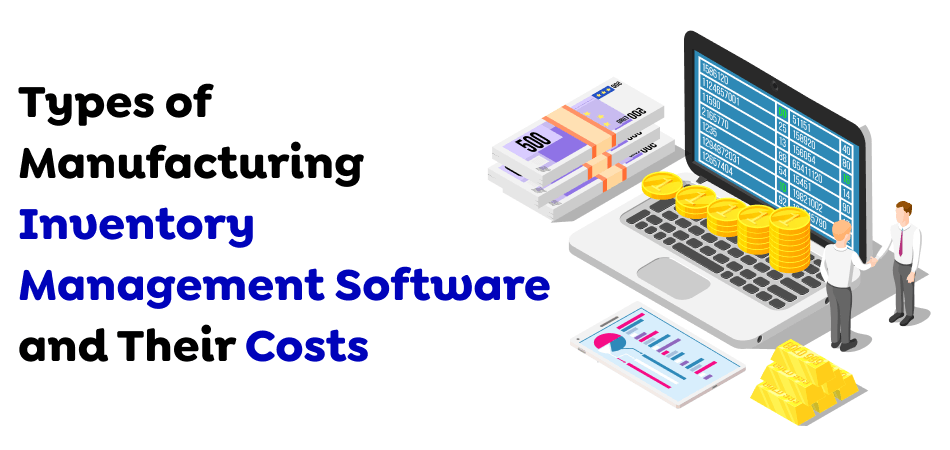
There are many kinds of software developed to control inventory. Every type has specific functions that meet a wide range of inventory and manufacturing management requirements.
The warehouse management system simplifies warehouse processes like packaging, packing, shipping, and inventory tracking. The system also increases efficiency by maximizing capacity for storage, eliminating the chance of errors, and speeding the delivery of orders.
The development of a warehouse management system’s prices range from $5000 to $250,000 and are influenced by variables like the facility size, its real-time tracking capability, the integration of ERP/SCM systems, and the levels of automation.
Also Read : Warehouse Management System in Food Industry: Here’s a Guide for a Smooth Operation!
MRP systems are designed to maximize production processes by controlling the use of materials and production times. They calculate the material requirement based on demand forecasts, ensuring uninterrupted production free of excess inventories or scarcity.
The cost of this kind of inventory management design and development typically ranges between $4,000 and $250,000, determined by variables such as the difficulty of manufacturing processes, the integration of ERP systems, the accuracy of forecasting demand, and scalability.
Asset tracking software is a tool for monitoring and supervising industrial establishments’ tangible assets throughout their lifespan. It helps improve regulatory compliance and maintenance schedule compliance, as well as visibility and control of asset utilization.
A system for tracking assets usually costs between $30,000 and $ 400,000 depending on the nature of the equipment (machines, vehicles, etc.), the integration of other systems, and the maintenance schedule.
SCM software handles the supply chain from purchase through delivery. To ensure that inventory moves efficiently and to reduce costs, SCM software integrates logistic management suppliers, relationships with suppliers, and demand forecasting.
The SCM cost of software development usually ranges between $30,000 and $250,000, or even more, depending on the level of complexity involved in Supply Chain processes, their integration into existing systems, real-time data analytics, and the amount of automation.
Also Read : Revealing the Differences Between SAP ECC and SAP ERP S/4 HANA !
ERP software integrates a variety of key operations into one platform. It includes financial management, human resource management, inventory management, and much more. The ERP software provides a comprehensive comprehension of all processes within the organization, allowing you to assign resources and make the right decisions faster.
The price of creating ERP software may vary from $30,000 up to several million dollars and is influenced by a variety of elements, such as the personalizations as well as the type of module (HR Finance, HR, Inventory, and so on. ) Integrations to other systems, scalability, and security demands.
POS Systems monitor inventory levels and sales in real-time while managing retail outlets’ inventory. The PoS software handles consumer purchases, facilitates transactions, and provides inventory turnover and sales details.
Development costs typically range between $50,000 and $150,000. Factors including real-time data processing, the integration of inventory management software, and the number of sales points and functions of CRM determine the amount.
Also Read : What Does It Cost to Develop a Construction Management Software Like Procore?
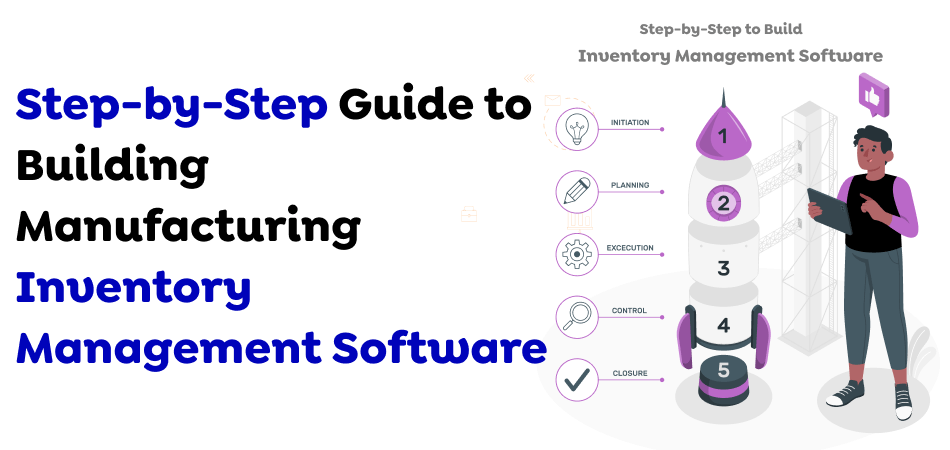
Manufacturing inventory management software development includes a series of steps, including analysis of requirements and design, development and testing, deployment, and ongoing maintenance. Each stage is vital for ensuring the software meets the business’s demands and is effective within manufacturing. Check out the essential phases of the manufacturing inventory software development with machine learning process.
Gathering and analyzing requirements are the first steps in designing software to manage inventory for industrial use. This involves identifying the manufacturer’s particular needs and objectives. Interviewing key players, including Warehouse employees, production managers, and IT professionals, will help you better understand procedures, challenges, and desired features.
Drawing out functional and non-functional requirements gives you an accurate comprehension of the software’s goal of establishing a solid system. It helps to estimate the overall manufacturing inventory cost of software development.
The planning and designing stage will precede the requirement-gathering phase. At this point, an extensive plan of the project, which includes timelines, objectives, and resource allocation, is created. This crucial stage also involves the design of the software architecture, which includes database schemas and points of integration with the system.
Mockups and wireframes of the user interface and UI demonstrate the user interface and capabilities. This step is vital in ensuring that software can meet the requirements identified from the first analysis, and that it can be effective and user-friendly.
Selecting the latest technologies and platforms is vital to the program’s success. This involves choosing the right frameworks, databases, and programming languages to meet the projects’ scale, security, and integration requirements.
Also, it is important to choose technologies that work with existing systems and offer required functions, considering the development of software for manufacturing inventory cost estimation. Selecting the appropriate technology ensures that the solution you use can be scalable, stable, and designed to last.
The development phase marks the beginning of actual programming languages. It starts by creating the development environment and revision control systems. This phase involves integrating core functions like monitoring inventory levels, order management, and warehouse management.
Additional functions, such as demand forecasting, quality control, and supplier management, can be combined with RFID and barcode trending technology to improve inventory tracking and eliminate manual mistakes. The process involves iterative code tests, refinement, and testing to ensure that the software functions according to the specifications.
The software’s performance is dependent on seamless integration with modern enterprise systems. This will ensure compatibility with the latest ERP and production management software, as well as other business applications for industrial use.
When required, creating middleware and APIs allows efficient workflows and data synchronization across various systems. If integration goes well, new software can enhance operations without affecting the workflows that are already in place.
A thorough testing process and meticulous quality control are crucial for ensuring that the software is effective. The testing phase includes various tests, including unit tests, integration tests, as well as system testing, to find and fix any problems.
Tests for user acceptance (UAT) take place using real situations to ensure the program meets the business needs. The results from this test stage are used by on-demand app development company to refine the software further to ensure it’s secure and works according to its specifications in every situation.
Also Read : Which AR/VR testing tools should you use For Your AR/VR App?
The initial deployment phase involves creating the production environment, which includes databases and servers, and making the software available to the business’s intended users. An initial test run can be carried out to determine and resolve any problems before implementing the full system. This will ensure that the system is functioning and ready to use in manufacturing. A well-planned deployment plan will minimize disruptions and assure a smooth transition to new software.
Regular maintenance and ongoing support are vital to resolve issues swiftly and maintain the software’s functionality. It is also important to provide technical guide to companies that upgrade their software frequently to ensure enhanced capabilities, performance, and security.
Continuous maintenance and support ensure that the software consistently meets the company’s evolving demands. However, maintenance costs can influence and contribute to the general manufacturing inventory software estimate of costs.
Also Read : Ship Management Software Reshaping the Logistics Industry: Harnessing the Potential!
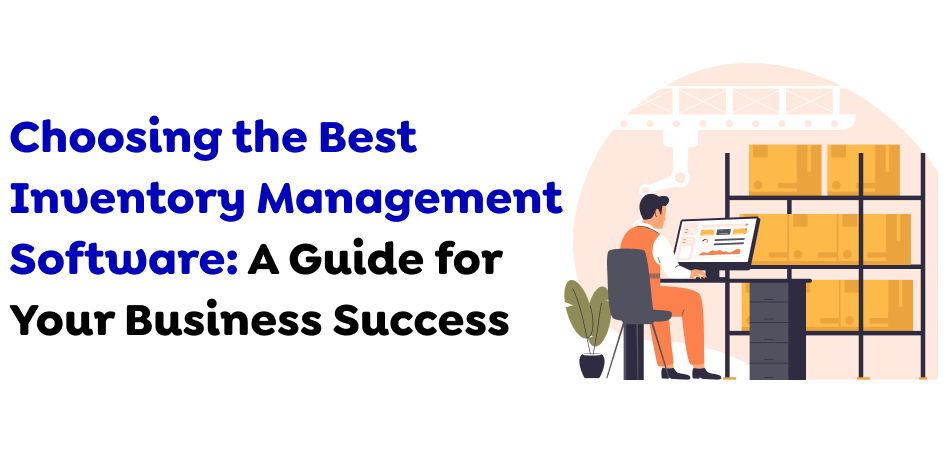
The selection of a good inventory management software is indeed an overwhelming task. These are the main criteria to take into consideration when selecting the right inventory management software to manage your mobile app development company:
Creating a list of essential features you’d like for your inventory management system is essential. You should also choose a software program that can use new technological advances to boost your workflow for inventory and other business processes. Always select a software that can provide extra features.
It’s a key element for business growth, but if you’re taking too long to organize your inventory, it could be an obstacle. It is essential to move toward an automated system instead of traditional inventory tracking devices. They will assist you in preventing the overselling of your products, reducing inventory mistakes, and saving time doing manual work.
Integration with third-party providers plays an essential part in the success of inventory management software. The list should include essential integrations like the payment gateway, shipping and POS 3PL, e-commerce platforms, and so on. Your software must connect directly with other tools; otherwise, you will need APIs to accomplish the same thing.
It is essential to use software that novices and experts can utilize. It must be simple to understand, and its interface should be easy to navigate. Usability is a crucial aspect and should not be ignored at any price.
Manufacturing inventory management software is an important element of any company. Therefore, it is crucial to pick software powered by technology and designed by modern technology. Software must be updated often, and bugs and problems must be corrected often.
A simple purchase of an inventory system does not suffice, as you may encounter technical problems shortly. To address these issues, choose an inventory software provider that has a continuous maintenance program and provides technical assistance. Make sure you know if support is provided via phone, chat, or support via email. Additionally, it’s important to be aware of the ratings and quality of the service provided.
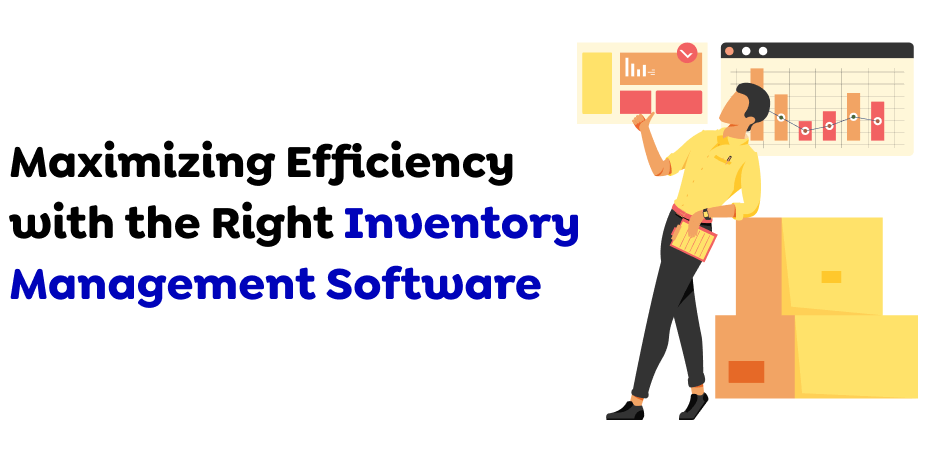
You now understand the manufacturing inventory management software costs better, and it will seem less intimidating and provide clearly defined ways to go. Now, you have the information required to comprehend pricing strategies, foresee the possibility of unexpected expenses, and finally pick a software that can help strengthen your business without spending a fortune.
Investing in modern manufacturing inventory management software is vital to stay competitive in today’s competitive marketplace. Despite the initial expense, the benefits over time from improved efficiency, decreased mistakes, and improved customer satisfaction will far outweigh any cost. Remember that your “right” price combines your requirements.
At Techugo, we are committed to transforming your ideas into reality with our cutting-edge app development solutions. Whether you’re looking to build a new mobile application, enhance your existing software, or explore innovative technology solutions, our team of experts is here to assist you every step of the way. We value collaboration and would love to hear from you! Get in touch with us today to discuss your project, and let’s embark on a journey to create something extraordinary together.
Write Us
sales@techugo.comOr fill this form